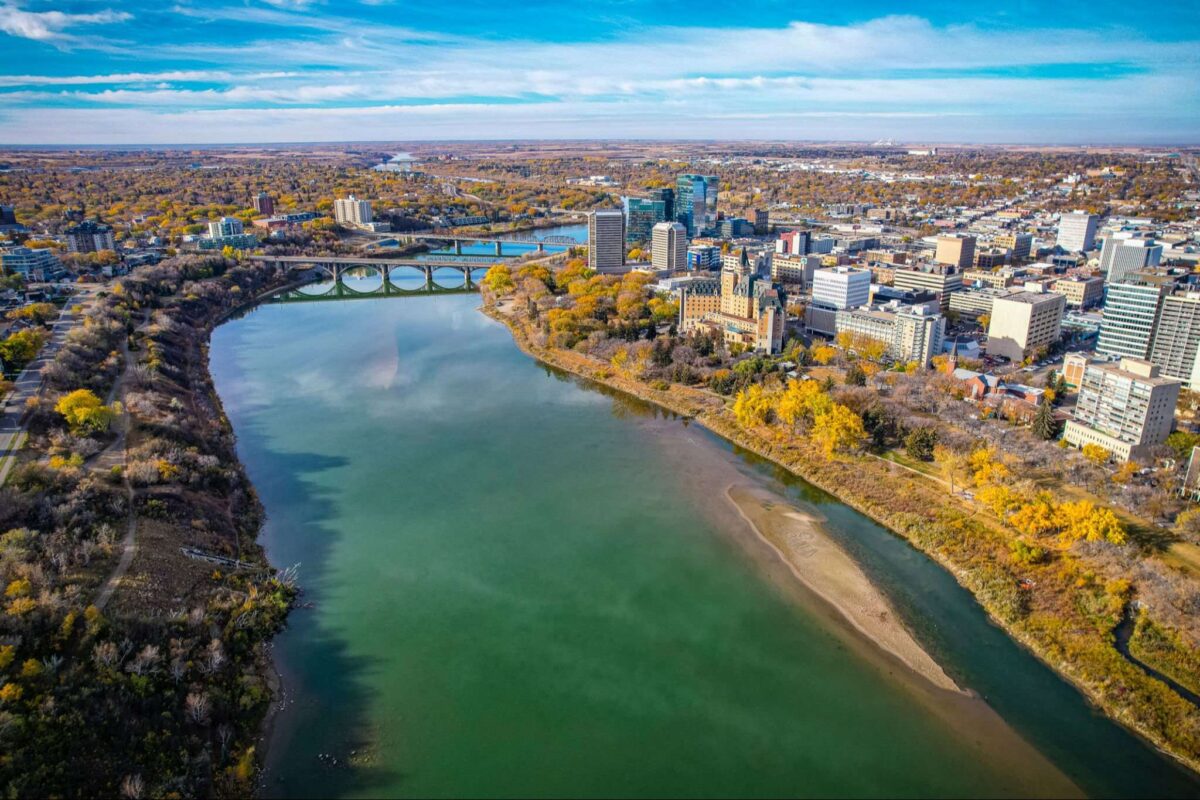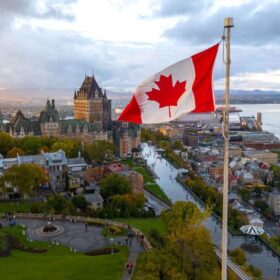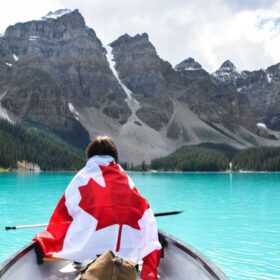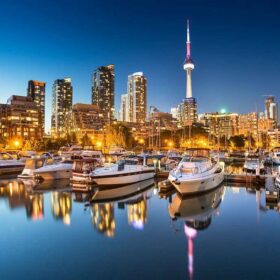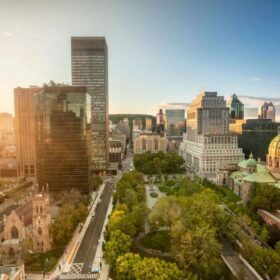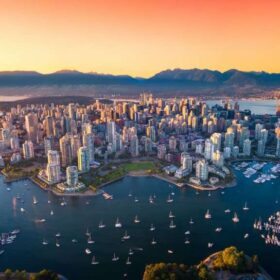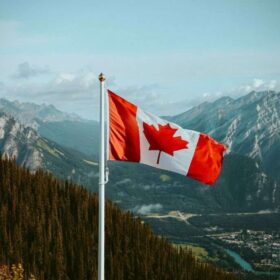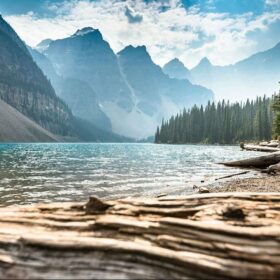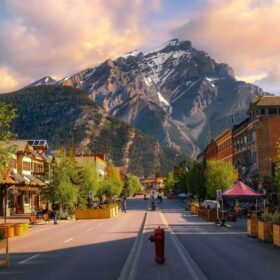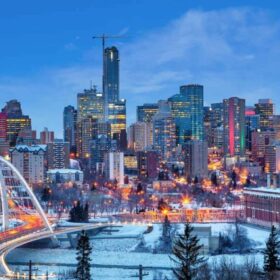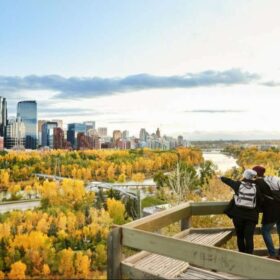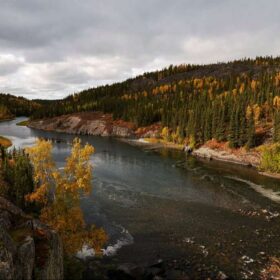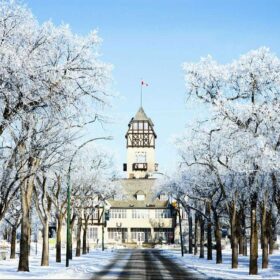Saskatchewan is occasionally criticized for being flat and uninteresting, but such judgments are unfair. Upon closer inspection, the province reveals itself as home to over 100,000 lakes, boreal forests, fast-flowing rivers, and a plethora of recreational opportunities. A lesser-known fact is that Saskatchewan holds the title of Canada’s sunniest province, which may contribute to its friendly population.
Situated near the center of Canada, Saskatchewan shares straight borders with Manitoba to the east, Alberta to the west, and the U.S. states of Montana and North Dakota to the south. Travelers crossing the province will encounter vast fields, but the northern region is a delight for enthusiasts of canoeing, angling, and swimming, all of which can be enjoyed on the numerous lakes.
Centuries ago, to the Cree First Nations who hunted buffalo and inhabited the Great Plains, the largest of the river waterways was known as “the river that flows swiftly” or “Saskatchewan.” It is from this river that the province derived its name.
For more information about the province’s numerous popular attractions and enjoyable activities, explore our list of the best things to do in Saskatchewan.
1. Prince Albert National Park
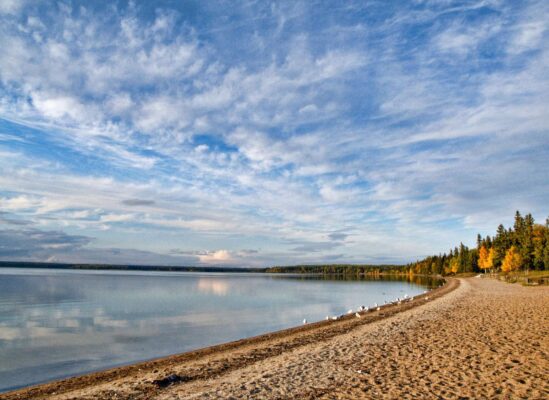
Prince Albert National Park features a gently undulating landscape with spruce bogs, expansive lakes, and aspen-studded uplands, making it a prime location for wildlife observation. The northern forests house Canada’s second-largest white pelican colony at Lavallée Lake, a roaming herd of Sturgeon River plains bison, as well as moose, wolves, black bears, foxes, lynx, caribou, and eagles. In the southern parklands, elk, deer, badgers, coyotes, and squirrels can be found.
Waskesiu Main Beach, situated on the eastern end of Waskesiu Lake, is renowned as one of Saskatchewan’s best beaches. This 600-meter stretch of golden sand is complemented by green lawns and trees. Restaurants and local shops across the street provide convenient options for grabbing ice cream on a hot, sunny day.
For those seeking quieter shores, the lake boasts nine other beaches, some of which are tranquil and uncrowded. As the area can experience strong winds, it’s advisable to check the wind direction and choose your beach accordingly.
The park has a rich history, with First Nations people residing here for millennia. Archaeological evidence suggests that during harsh winters, tribes from the prairies sought refuge in these sheltered woodlands, interacting with the local inhabitants.
Grey Owl, a colorful and controversial naturalist from the 1930s, made his home in the park for seven years in a small log cabin known as “Beaver Lodge” on Ajawaan Lake. Accessible by boat or canoe across Kingsmere Lake or a 20-kilometer trail from the lake’s south end, Grey Owl’s writings reflect his deep appreciation for the wilderness, which he believed was threatened by advancing civilization.
2. Fort Walsh National Historic Site
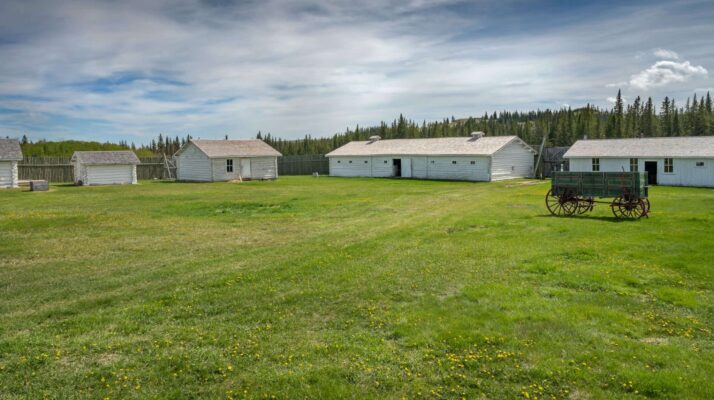
Established in 1875 under the leadership of James Walsh, Fort Walsh National Historic Site was created to curb the illegal whisky trade and emerged as a pivotal post in the West. Throughout its existence, the fort engaged in negotiations with whisky traders, indigenous communities, and the numerous Sioux warriors who sought sanctuary in Canada following clashes with the U.S. cavalry.
After the construction of the railway and the repatriation of the Sioux to the USA, the fort was disassembled and left vacant. In 1942, the Royal Canadian Mounted Police (RCMP) acquired the land, establishing a ranch for horse breeding. Upon the RCMP’s relocation to Ontario, the property transitioned into a national historic site with a comprehensive reconstruction initiative. Beyond enjoying costumed re-enactments, visitors can partake in outdoor activities at Fort Walsh, such as hiking and biking along its extensive trail network.
3. RCMP Heritage Centre
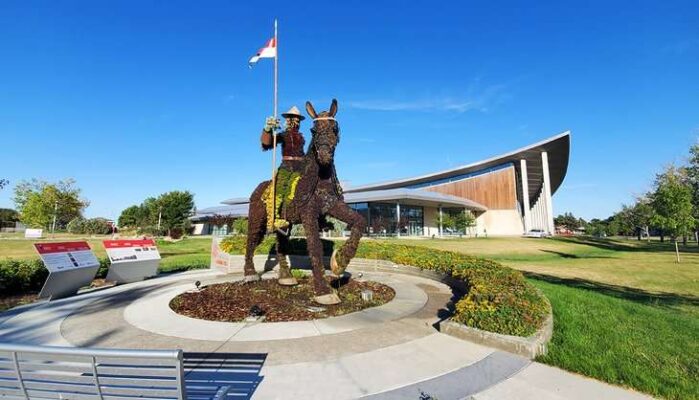
The RCMP Heritage Centre, Canada’s largest of its kind, features exhibitions showcasing equipment, weapons, photographs, and more. Both the Sergeant Major’s Parade (conducted in the Parade Square, relocating to the Drill Hall during winter or inclement weather) and the Sunset Retreat (summer) draw substantial crowds. The latter involves a vibrant flag ceremony with a parade of recruits and a marching band, reminiscent of the tattoos from 18th- and 19th-century British military tradition.
Visitors can also enjoy engaging activities such as trying on RCMP regalia and participating in informative guided tours of the site.
4. Regina
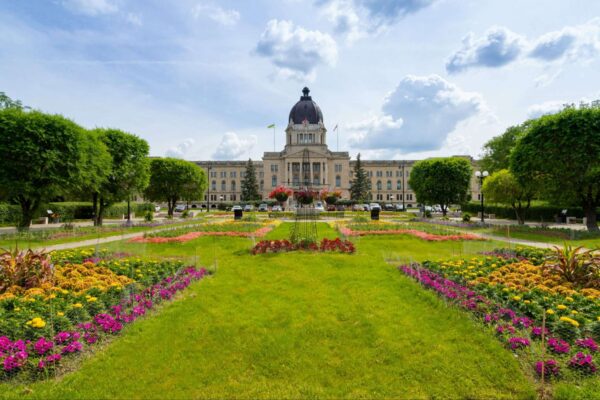
Regina, a cosmopolitan hub for commerce and culture, houses various government and provincial institutions, such as the Saskatchewan Legislative Building, which is open to visitors. The city thrives economically and showcases several arts and heritage attractions, including the enlightening Royal Saskatchewan Museum and the Mackenzie Art Gallery, situated near the parklands of Wascana Centre around Wascana Lake.
The city’s RCMP Heritage Centre is renowned for parades and military-tattoo-like events, while science exploration takes center stage at the Saskatchewan Science Centre.
5. Moose Jaw
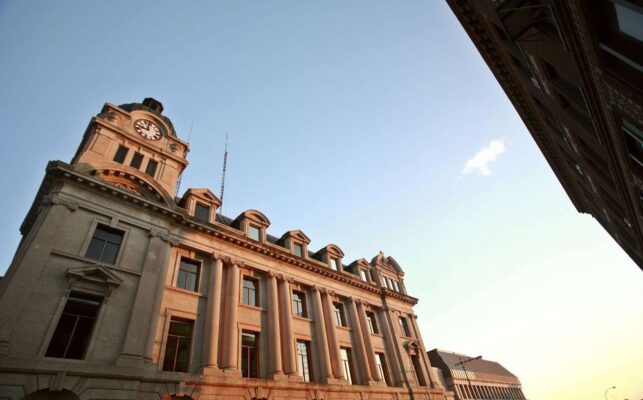
Located at the confluence of the Moose Jaw River and Thunder Creek, the “friendly city” of Moose Jaw is renowned for its top attraction, The Tunnels of Moose Jaw, remnants from the era of the first Chinese immigrants. Today, costumed guides bring characters from Moose Jaw’s history to life in these tunnels. Additionally, the city is home to Mac the Moose, a colossal moose sculpture adorning the grounds of the welcome center.
Moose Jaw hosts another branch of Saskatchewan’s Western Development Museums, which delves into the history of Prairie transportation. Notable museums offering unique experiences can also be found in Saskatoon, North Battleford, and Yorkton.
6. The Battlefords
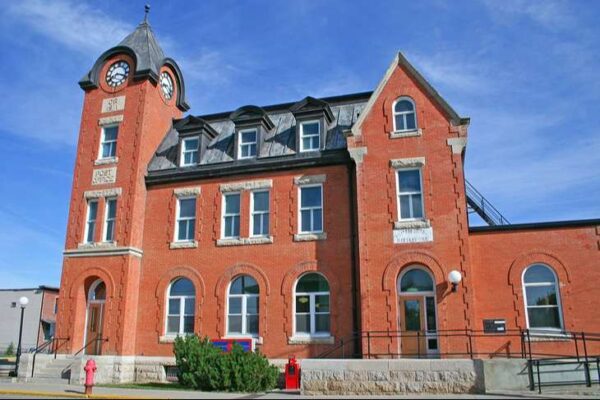
Comprising two cities, North Battleford and Battleford, situated on opposite banks of the Saskatchewan River, the Battlefords hold historical significance. In the early settlement period, Battleford served as a crucial Mounted Police post and the initial seat of the Northwest Territories government. The Fort Battleford National Historic Site delves into the history of the Mounties through exhibits housed in renovated structures.
The Western Development Museum in the city immerses visitors in agricultural history with practical displays, including a farm and village. For those with some time to spare, a pleasant walk to the summit of King Hill offers panoramic views of the city and its surroundings.
7. Saskatoon
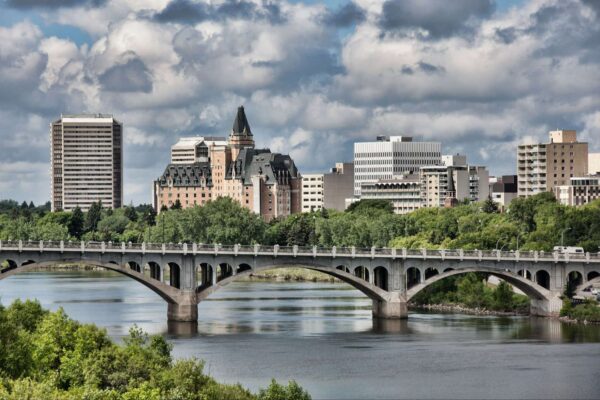
Basking in sunshine along the South Saskatchewan River, Saskatoon is a delightful city with numerous attractions that delve into its rich heritage. From the Wanuskewin Heritage Park, showcasing the culture of the first Prairie inhabitants, to the Ukrainian Museum of Canada, which explores the history and traditions of European settlers, Saskatoon offers a diverse cultural experience. The city hosts the largest of Saskatchewan’s four Western Development Museums, featuring a lively reconstructed main street known as “Boomtown 1910.”
For those traveling with children, the Saskatoon Forestry Farm Park & Zoo is a must-visit, not only for its diverse collection of creatures but also for its picturesque surroundings. Art enthusiasts can explore the Remai Modern Museum, renowned for its impressive collection of Picasso’s works.
8. Fort Carlton Provincial Park
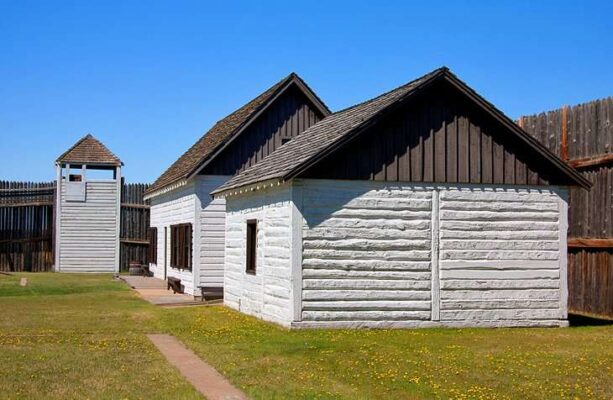
Originally established in 1795 as an outpost of the Hudson’s Bay Company to facilitate river patrols and supply fur traders, Fort Carlton remained operational until 1885. The current reconstruction, built on the foundations of the third and final site of the fort (erected in 1967), serves as a replica that provides a captivating glimpse into life during this historical period.
Whether opting for a summer canoe tour or strolling through the grounds to observe the reconstructed fort, a Cree village, displays of hides, and various supplies, visitors can immerse themselves in the rich history encapsulated by Fort Carlton.
9. Qu’Appelle Valley
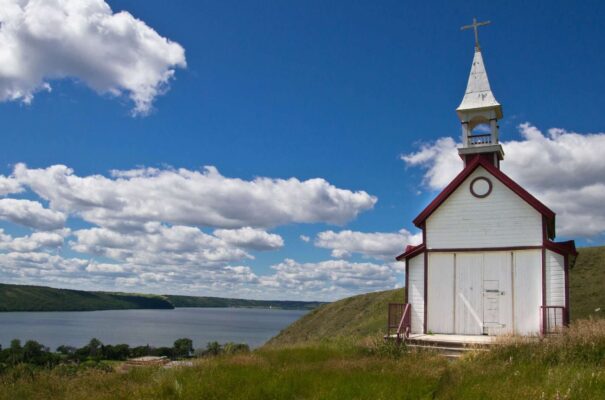
Running alongside the Qu’Appelle River is a stunning, steep-sided valley sculpted by glacial waters on the gently undulating prairie. This landscape takes on the appearance of a lush garden, with eight lakes dispersed along the valley, contributing to the formation of distinct ecosystems.
The Qu’Appelle Valley stands out as one of Saskatchewan’s most sought-after summer destinations, featuring three remarkable parks to explore. Buffalo Pound Provincial Park, situated in the western region, offers an excellent swimming area, mountain bike trails, and camping facilities. Nearby, Echo Valley Provincial Park near Fort Qu’Appelle boasts two beaches on two lakes, complemented by a charming walking trail and camping options. Moving a bit farther east, Crooked Lake Provincial Park hosts an excellent campground with stunning waterfront sites, hiking trails, and a nearby golf course.
10. Batoche National Historic Site
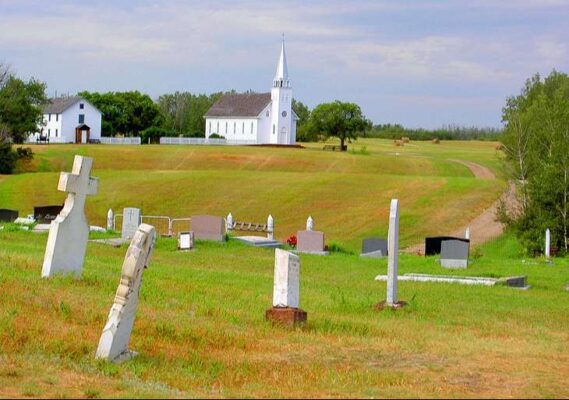
Batoche served as the headquarters for the renowned Métis leader Louis Riel during the Northwest Rebellion of 1885, and it was the site of the decisive battle that brought an end to the uprising. Exhibits at the location depict the Métis way of life, the events leading up to the rebellion, and the crucial battle that took place in May 1885.
The presbytery, bearing visible shells and bullet holes from the historic battle, and the Church of St. Antoine de Padoue (constructed in 1883-84) have been transformed into excellent museums. The churchyard contains the graves of Dumont and Letendre, as well as a mass grave for fallen Métis. A convenient shuttle bus service is available for navigating this extensive site, and additional enjoyable activities include renting a canoe and engaging with costumed guides.
FAQs
Q: Is Saskatchewan only for outdoor enthusiasts?
A: No, Saskatchewan caters to a diverse range of interests, from cultural experiences to family-friendly activities.
Q: When is the best time to visit Saskatchewan?
A: Each season offers unique experiences, so the best time depends on your preferences. Summer is popular for outdoor activities, while winter brings a snowy wonderland.
Q: Are there budget-friendly accommodations in Saskatchewan?
A: Yes, the province offers a variety of budget-friendly options, including camping in provincial parks and affordable motels.
Q: What wildlife can I encounter in Saskatchewan?
A: Saskatchewan is home to a diverse range of wildlife, including bison, elk, bears, and various bird species.
Q: Are there hidden gems off the beaten path in Saskatchewan?
A: Absolutely! Castle Butte and Narrow Hills Provincial Park are just a couple of examples of lesser-known treasures waiting to be explored.

